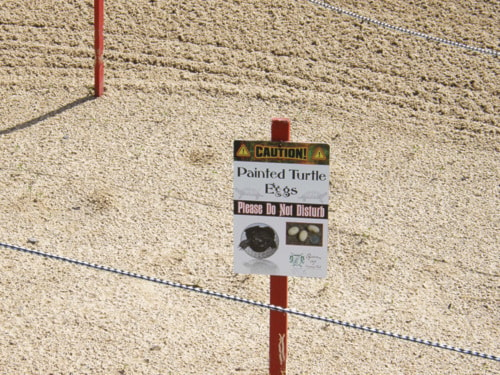Members of the South Okanagan Naturalists’ Club are assisting the Penticton Golf & Country Club in its quest to achieve certification under the Audubon Cooperative Sanctuary Program for golf courses which recognizes golf courses that “protect the environment, conserve natural resources and provide wildlife habitats.”
In the words of Audubon International, “achieving certification demonstrates a course’s leadership, commitment, and high standards of environmental management.” So far, they have certified about 600 golf courses worldwide as meeting the criteria. To put this in perspective, in 2005 it was estimated there was just fewer than 32,000 golf courses in the world, of which 2,000 are in Canada and 38 in the Okanagan Valley. None of the Valley courses are yet certified although a number are in the process.
This of course (pun intended) raises the issue of whether the term environmentally friendly golf course is an oxymoron. It wasn’t too long ago that the answer was an unequivocal yes.
When you look at such spectacular courses as Augusta while watching the Masters tournament, you should know all those luscious fairways and beautiful greens didn’t just happen. They were created with the use of tons of fertilizers, hundreds of gallons of herbicides and pesticides and the consumption of prodigious quantities of water (approximately 18 million U.S. gallons per year per course). Nothing very environmentally friendly there; add in the large amounts of land that are used for the courses and it’s enough to make even a weekend environmentalist wonder what the end result will be as the world’s appetite for golf courses seems to be insatiable.
The Audubon International program involves a six-step program which includes: environmental planning; wildlife and habitat management; chemical use reduction and safety; water conservation; water quality management, and outreach and education. Many of these issues are complex and can require significant work on the part of the golf course, but the end result can be a major benefit for the environment and the local community.
Obviously reducing the use of toxic chemicals and conserving water seem like “no-brainers” with obvious benefits. Other steps can involve changing how the course is laid-out and managed. Instead of having manicured grass right down to the water’s edge, many courses now allow cattails to grow at the water’s edge and provide habitat for waterfowl, reptiles and amphibians, etc. In the U.S., a federal government agency, the U.S. Fish & Wildlife Service, has actively worked with golf courses to increase wildlife habitat. Nesting boxes can be installed for many different types of birds — this is a great project for a school shop class: building nest boxes.
In the case of the PG&CC, a number of things have been done or are planned. For example, all of the irrigation water is waste water from the Penticton sewage treatment plant so the course not only doesn’t use clean water, it in fact helps to further clean the water (by filtering it through the soil) before it goes back into the Okanagan River. In addition, a full-time water technician monitors the course and conditions ensuring minimum water use. Additional native plantings are being made on the course and bird surveys are underway to determine which species use the course and what can be done to help them. Interestingly enough, there are two colonies of the threatened barn swallow that nest on the course. Much more than this, however, will need to be done if the club is to achieve certification. My expectation is that the club will do what is necessary to reach this goal.
Does this mean that golf courses should now be welcomed wherever they are proposed? Absolutely not — golf courses still consume a huge amount of land that otherwise might be productive habitat. It does mean that golf courses that are built should be held to the highest modern standards of sustainable environmental practices when being built and while operating. Golf courses still should not be built on environmentally sensitive land. Modern golf courses do not need to be an environmental disaster.
On another note, the South Okanagan Naturalists’ Club invites readers to visit our new website: www.southokanagannature.com. This modern site provides information about our club and its activities. It allows you to read back issues of Nature Wise and provides a wealth of other information.
The opinions expressed in this column are the author’s and not necessarily the position of the South Okanagan Naturalists’ Club.
Robert Handfield is the past-president of the South Okanagan Naturalists’ Club.
